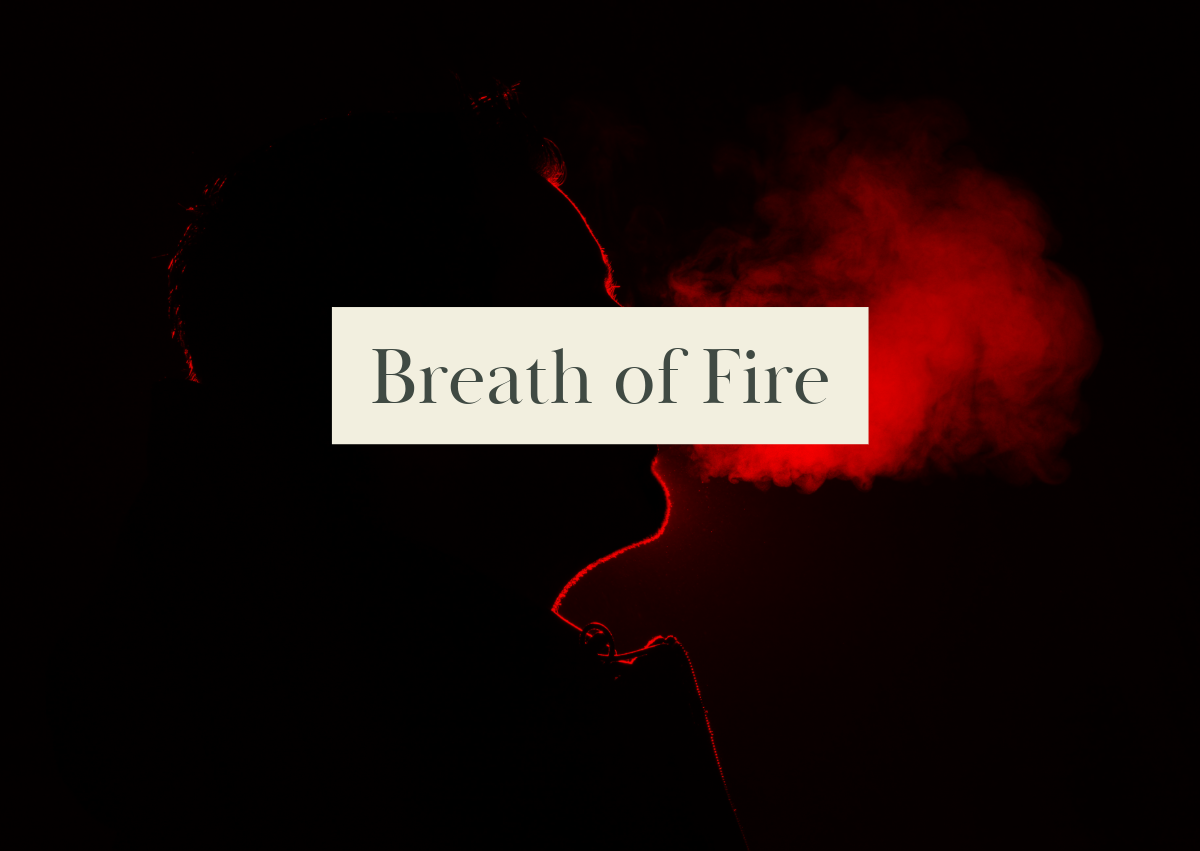Coming Soon: E-book about Kundalini Yoga - Sign up here to be among the first to get it!
Breath of fire is a fundamental pranayama practice of Kundalini Yoga. This technology can be defined as an energizing breathwork that actively works on the third chakra.
Benefits and Cautions of Breath of Fire
Kundalini Yoga books report that 30 minutes of Breath of Fire a day will regulate the pituitary gland which will regulate the entire glandular system.
The nervous and glandular systems are deeply interconnected, so managing the pituitary gland can help calm the nervous system. For instance, in stressful situations, the glandular system secretes cortisol, the stress hormone. This causes the body to enter a “fight, flight, or freeze” state, which can impair decision-making abilities. Consequently, instead of thoughtfully responding to challenges, we tend to react impulsively.
The Breath of Fire offers a wide range of benefits for both the mind and body, including:
- Detoxification: Helps cleanse the lungs, sinuses, and respiratory system, which can improve the body’s ability to rid itself of toxins.
- Increased Oxygen Supply: Enhances the oxygen level in the blood, which increases energy levels and improves the efficiency of all bodily systems.
- Stimulates the Digestive System: The abdominal contractions in this breathing exercise stimulate the digestive organs, potentially improving digestion and encouraging detoxification of the digestive tract.
- Boosts the Immune System: By enhancing the circulation of blood and improving the functioning of the digestive system, it can help strengthen the immune system.
- Enhances Concentration and Focus: Regular practice can increase mental clarity, concentration, and focus by calming the mind and reducing stress and anxiety.
- Activates the Nervous System: It stimulates the sympathetic nervous system, prepares the body for action, and when practiced regularly, can help balance the nervous system as a whole.
- Energizes and Revitalizes: Quickly invigorates the mind and body, providing a sense of energy and alertness.
- Improves Circulation: Enhances blood circulation, which can lead to improved function of various organs and the skin.
- Balances Hormone Levels: Can help regulate and balance hormone levels by stimulating the glands, which may positively affect mood and overall well-being.
- Strengthens the Lungs and Respiratory Functions: With its focus on powerful breathing, it can help increase lung capacity and strengthen respiratory muscles.
It’s important to note that while Breath of Fire has many benefits, it may not be suitable for everyone, especially for pregnant women, individuals with high blood pressure, heart conditions, or respiratory issues. It’s always recommended to learn this technique under the guidance of a qualified instructor and consult with a healthcare provider if you have any health concerns.
How to do breath of fire
Regular breathing iscomposed by inhalation, pause, exhalation, pause. The movement involves different muscles including the diaphragm. In Breath of Fire the breath is generated in the navel point, that creates a rhythmic contraction and relaxation that causes the air to move out and in the lungs. During Breath of Fire the practitioner will not perform any pause between inhalation and exhalation.
This breath is ofter thaught as a panting breath. You can start performing it with your month open and, as you find your rhythm, breathing only from your nose.
INSTRUCTIONS
1. Find a Comfortable Seat
- Sit in a comfortable cross-legged position, such as Easy Pose (Sukhasana), with your spine straight. You can sit on a cushion or yoga mat for support. Place your hands on your knees or in your lap.
2. Focus on Your Breath
- Begin by observing your natural breath to become present and centered. Take a few deep, slow breaths to prepare your body and mind for the practice.
3. Establish the Breath Pattern
- Breath of Fire is performed through the nose with equal emphasis on the inhalations and exhalations, at a rapid rate. Start by exhaling forcefully through your nose, pulling your navel in towards your spine. The inhalation then happens passively by releasing the navel.
4. Find Your Rhythm
- Start slowly to get accustomed to the rhythm and then gradually increase the speed of your breath. Your focus should be on the exhalation; the inhalation will naturally follow.
- You can mentally vibrate “Sat” and on the exhalation, mentally vibrate “Naam.” Put the emphasis on the rhythm and the speed will develop gracefully over time. The breath will become powerful, rhythmic, and rapid (2 to 3 breaths per second once one achieves proficiency).
5. Use Your Abdominal Muscles
- Engage your abdominal muscles with each exhalation, feeling the navel draw inwards. The movement is quick and precise, powered by the diaphragm.
6. Keep Your Upper Body Still
- Ensure that your upper body remains still and relaxed. The movement is concentrated in your diaphragm and abdominal muscles. Your chest, shoulders, and face should stay relaxed.
7. Closing the Practice
- To end, inhale deeply, hold your breath for a few moments, then exhale slowly. Observe any sensations in your body and mind. Allow your breath to return to its natural rhythm.
Tips
Fully Relax to Fully Exhale
Initially, students may find themselves so focused on the act of exhaling during the Breath of Fire that they neglect to fully relax the navel between each breath. This oversight can lead to an accumulation of uncomfortable tension in both the diaphragm and abdominal area. It’s beneficial to slow the pace, ensuring that both the contraction and relaxation phases of the Breath of Fire are given adequate time. During inhalation, mentally chant “Sat,” and with each exhalation, chant “Naam.” Focus should be on maintaining a steady rhythm; speed will naturally increase as one becomes more adept. Eventually, the breath will transform into a powerful, rhythmic force, achieving a rate of 2 to 3 breaths per second as proficiency is gained.
Keep your posture
Mantain an upright position while performing breath of fire. Make sure to not hunch forward and humper the pulsation of the navel point.
Stay Relaxed
While doing Breath of Fire, remain relaxed with your body. This breathwork is generated through the navel and through the nostrils, so try to keep the rest of the body relaxed and still.
If you are interested in learning more about Pranayama, check out these guides:
Best Pranayama Books to Deepen Your Yoga Practice
What is Yogic Breathing? Discovering the Depths of Pranayama
or if you would like to learn more about Kundalini, sign up for our mentorship programs.




